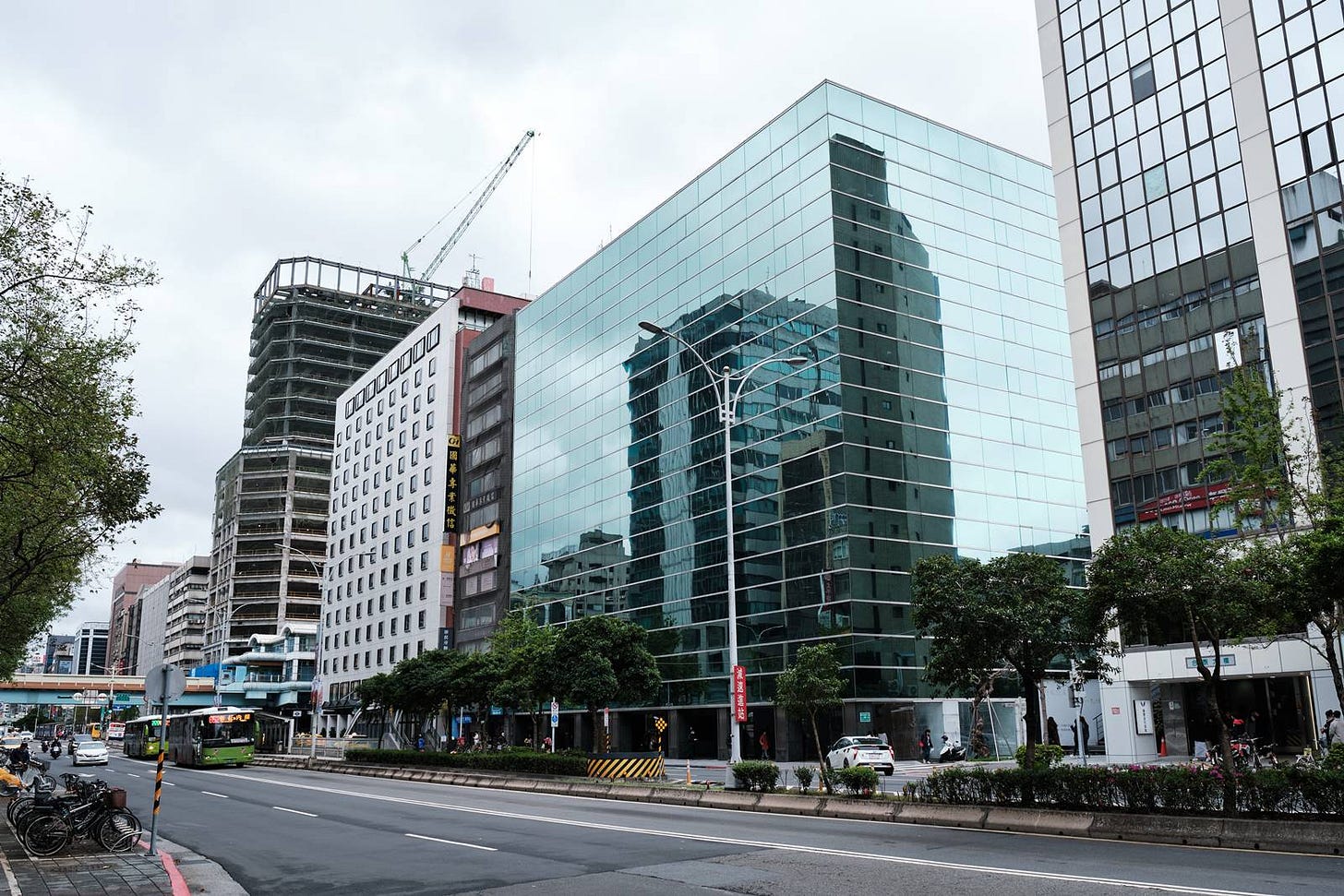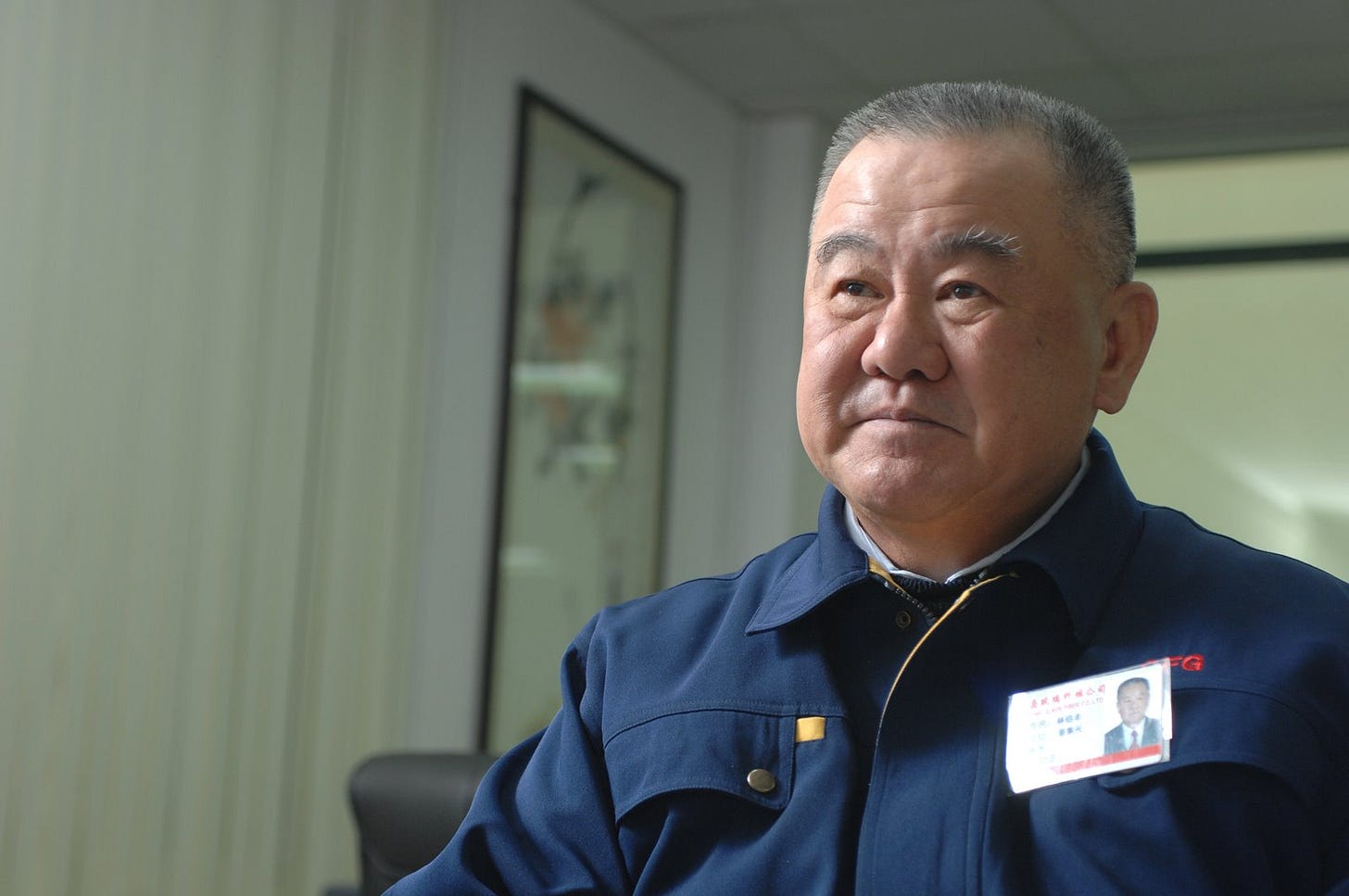Hello everyone,
Before the Lunar New Year, I mentioned that I would write a series of newsletters detailing how Nvidia is actively adopting new technologies to widen and deepen its competitive moat. This should provide valuable insights for Taiwan’s rapidly expanding Nvidia supply chain.
However, major news events have kept us semiconductor reporters on our toes after the holidays, including DeepSeek and the possibility of TSMC being forced to take over Intel. As a result, my commitment to readers had to be postponed again and again.
This week, as the solar term transitions into Jingzhe (Awakening of Insects), accompanied by rolling spring thunder, an unexpected event took place: TSMC President C.C. Wei appeared at the White House alongside President Trump to announce an additional $100 billion investment in the U.S., including three new wafer fabs, two advanced packaging plants, and a research center.
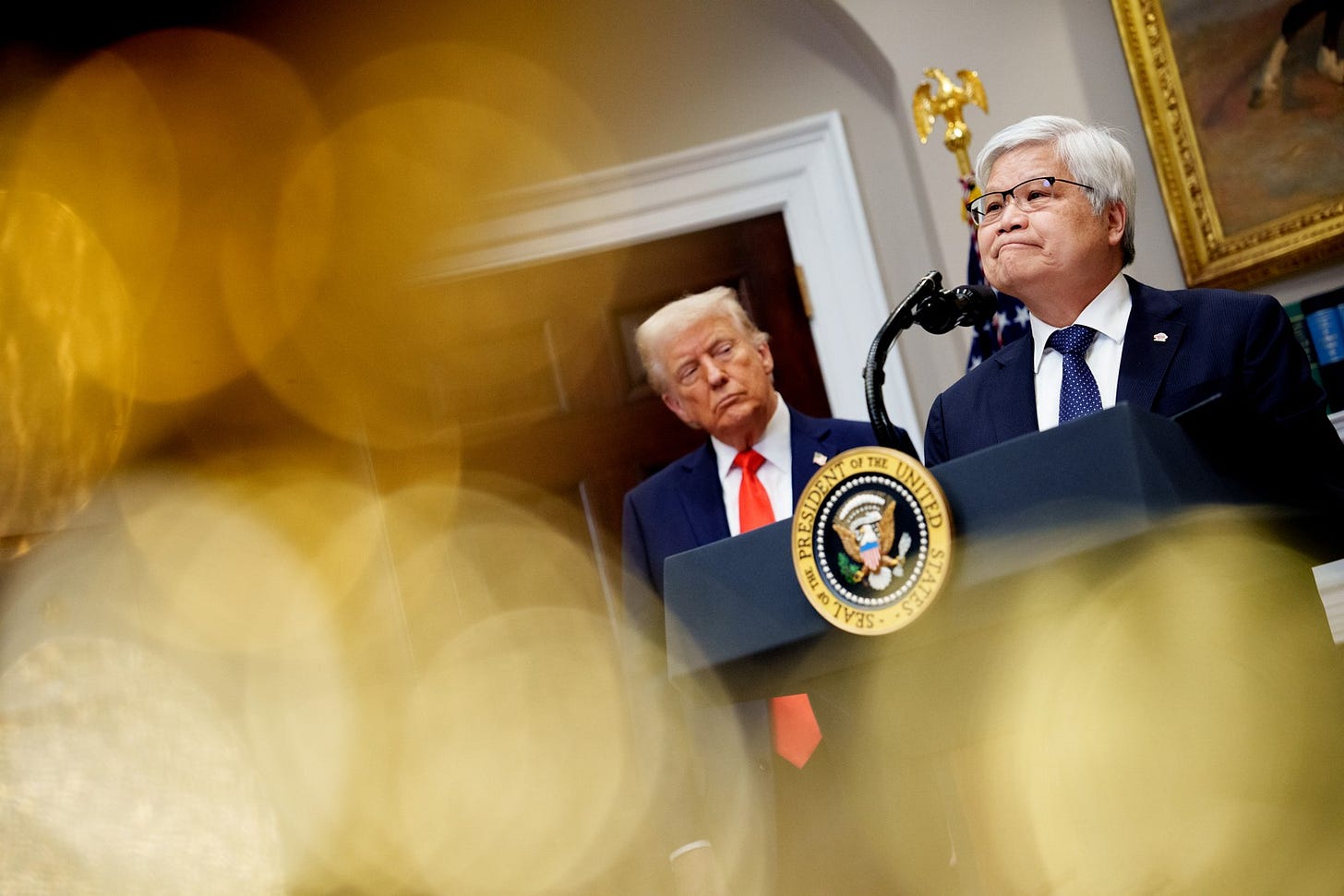
Here are my observations:
This move aligns with what I previously mentioned in this newsletter—TSMC must swiftly propose a U.S. investment plan within its capabilities to appease President Trump and avoid the worst-case scenario of taking over Intel.
The absence of a promised completion deadline or a commitment to bringing the most advanced process technology to the U.S. is already a win for TSMC.
Judging by President Trump’s enthusiastic tone and expressions at the White House press conference and later during his State of the Union address, where he declared that TSMC will "build the world’s most powerful chip industry in the U.S.," it appears he is temporarily satisfied. The pressure on TSMC to take over Intel may ease significantly.
One amusing side note: when introducing C.C. Wei, Trump repeatedly emphasized, “He is a legend.” I strongly suspect that he might have confused Wei with Morris Chang (as both have white hair and similar builds).
Now, let’s move on to the main topic of this issue—this is the first installment of the Nvidia supply chain series I promised.
The U.S.-China tech war has transformed Taiwan into the world’s AI arsenal, rapidly integrating previously unrelated traditional manufacturing industries into the supply chain.
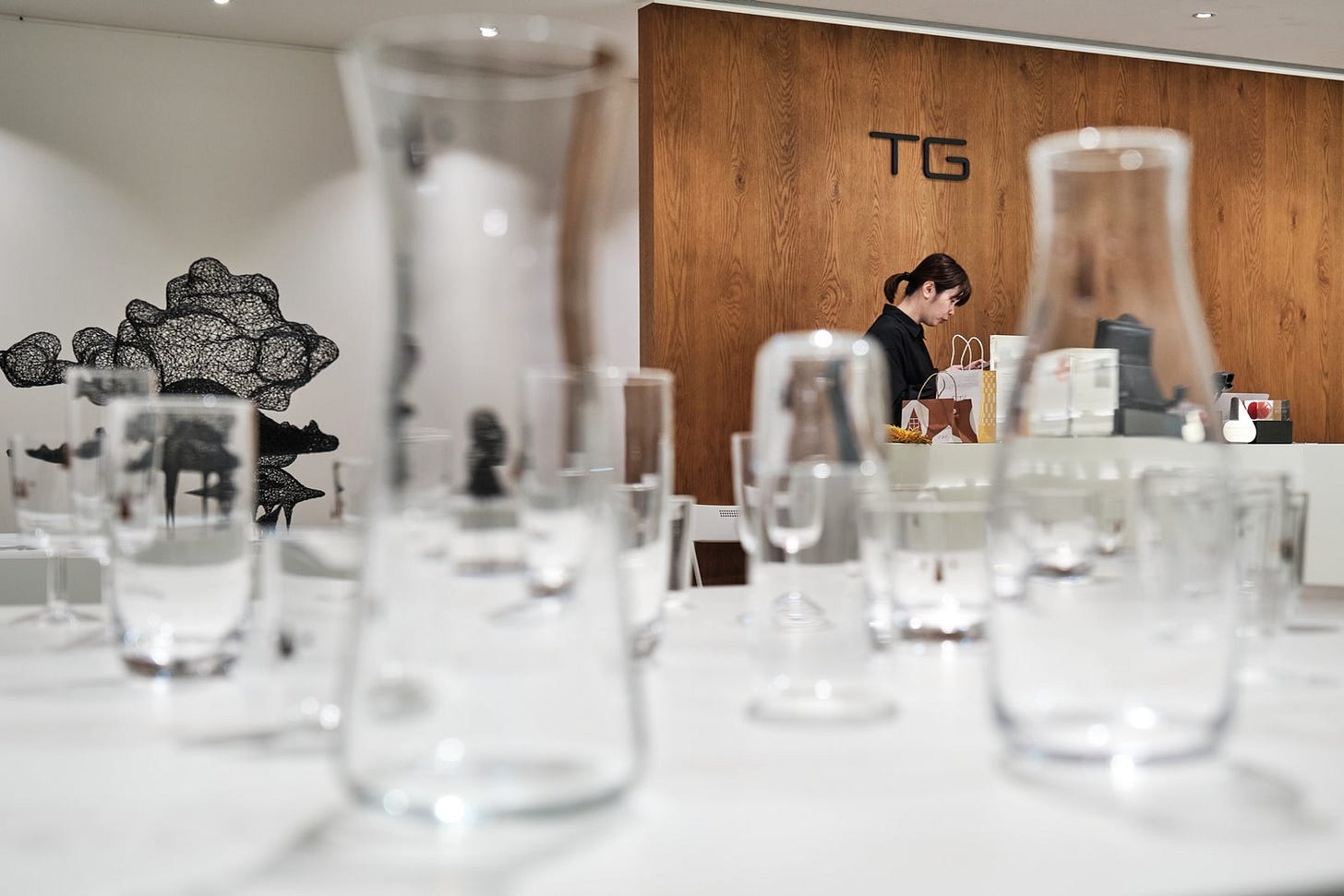
This newsletter exclusively reveals how a 60-year-old traditional industry leader has unexpectedly become the bottleneck solution for Nvidia’s most advanced AI servers. Nvidia executives have been making repeated visits, urging them for help. What trends does this reflect?
How Taiwan Glass Became the Key to Unlocking Nvidia’s GB200 Shipments
Last Thursday, I attended the spring banquet of Taiwan Glass(台玻), the largest glass manufacturer in Taiwan, held at a four-star hotel near the company’s headquarters in Taipei.
Amidst the lively atmosphere of toasts and laughter, I couldn’t help but imagine Jensen Huang, Nvidia’s CEO, frequently seen socializing with Taiwanese clients, showing up in his signature black leather jacket. What if he were sitting at the head table alongside Taiwan Glass Chairman Lin Por-fong(林伯豐) and President Lin Por-shih(林伯實), drinking whiskey with customers from Paolyta and Kinmen Kaoliang Liquor, and engaging in lively banter in his fluent Taiwanese?
This isn’t entirely a wild fantasy. This 60-year-old glass manufacturer is about to become a supplier for Nvidia’s most advanced AI server, the GB200.
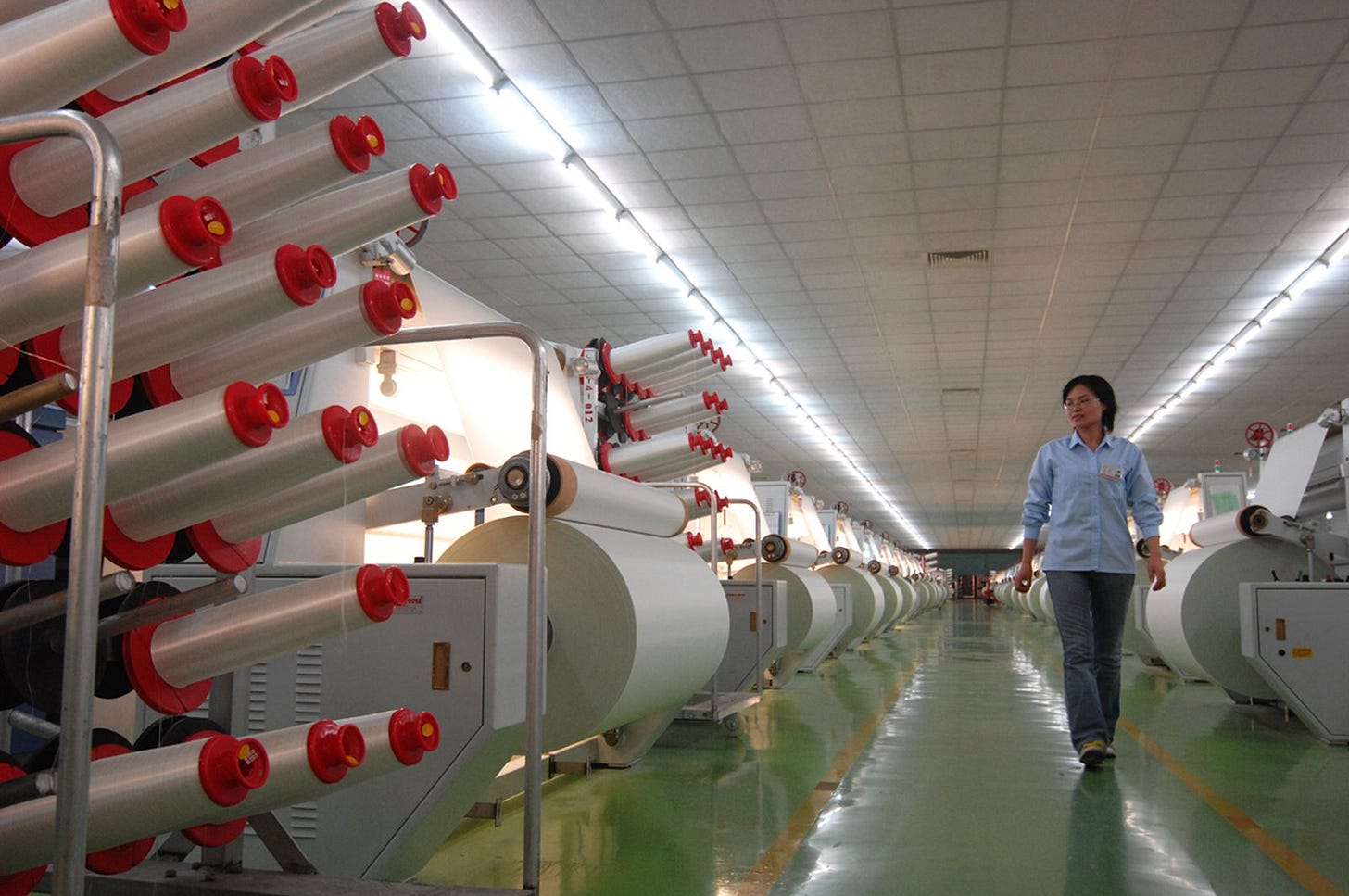
Over the next few months, whether Nvidia’s top-tier servers can ship smoothly, whether OpenAI and Google can secure enough chips to train the next generation of super AI, all may hinge on whether Taiwan Glass’s Taoyuan plant can complete its glass furnace on time and produce electronic-grade fiberglass fabric that meets Nvidia’s stringent quality and quantity requirements.
“This is the latest bottleneck in CoWoS,” a senior Nvidia supply chain executive told me.
TSMC’s CoWoS packaging, which supports the GPU and high-bandwidth memory (HBM) in Nvidia’s high-end AI chips, requires an internal substrate made from a special type of low thermal expansion coefficient (Low CTE) fiberglass fabric. This material was exclusively supplied by Japan’s Nittobo (Nitto Boseki).
However, due to Nvidia’s explosive growth, Nittobo’s production capacity can no longer keep up, leading to a Low CTE fiberglass fabric shortage since the beginning of this year.
Currently, leading Japanese and Taiwanese substrate makers Ibiden and Unimicron are prioritizing Nvidia, meaning that the first to be affected by this supply crunch are the second-tier AI chipmakers that also use CoWoS packaging, such as Google and Amazon’s in-house ASICs.
How Did Taiwan Glass Enter Nvidia’s Supply Chain?
Only three companies in the world are capable of producing Low CTE fiberglass fabric:
Taiwan Glass
Japan’s Nittobo
China’s Taishan Fiberglass
“The Japanese company is expanding too slowly,” explained Lin Chia-yu(林嘉佑), General Manager of Taiwan Glass’s Fiber Division and the second son of Chairman Lin Por-fong.
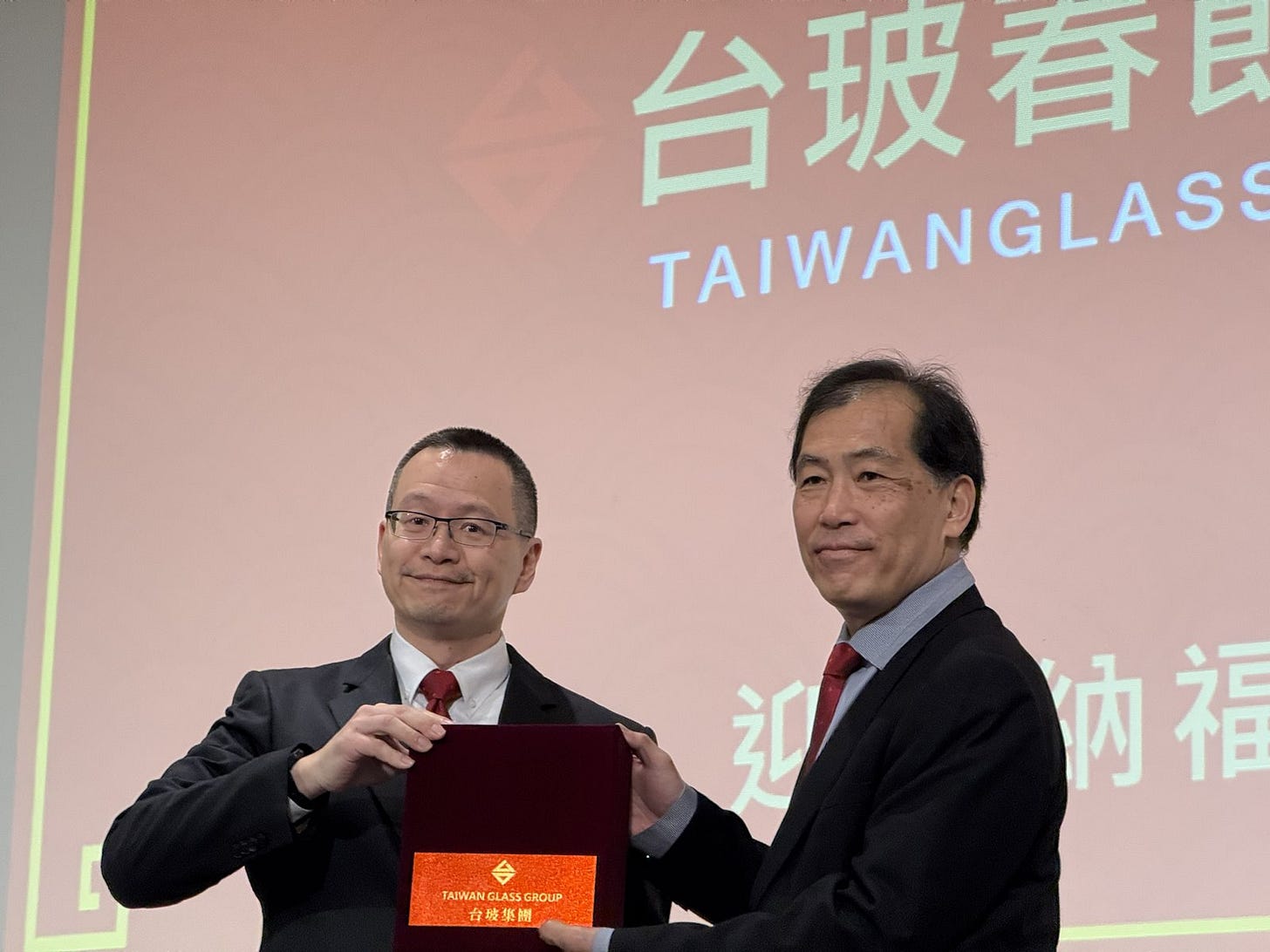
Nittobo’s new production line won’t be operational until 2027, while Taishan Fiberglass is part of China National Building Material Group, making it unsuitable for U.S. AI supply chains that are actively eliminating Chinese components.
“So, all eyes are on us,” Lin said.
Lately, Nvidia and Unimicron executives have been visiting Taiwan Glass’s headquarter on Nanjing East Road every few days, pleading for them to accelerate production.
“We are expanding as fast as we can,” Lin told me. Taiwan Glass’s Low CTE fiberglass fabric has only just passed certification, and volume production won’t start until April.
But Lin emphasized that Taiwan Glass will not prioritize Low CTE alone. "We have two key products, and both are equally important."
The other one is the Low Dielectric (Low DK) fiberglass fabric, recently a more well-known star product of Taiwan Glass.
“Low CTE is used for substrates, while Low DK is used for the lower-level PCB (printed circuit board),” Lin explained. “Both are essential to making AI servers.”
So why has Taiwan Glass focused its investor presentations on Low DK, barely mentioning Low CTE, despite its higher technical barrier and newsworthiness?
Lin explained that part of the reason is that the product has only just been certified. Another reason? Secrecy.
“We don’t want too many competitors jumping into this,” he admitted.
With China’s manufacturing overcapacity pressuring the market, Taiwan Glass’s traditional glass business has been losing money. Electronic-grade fiberglass fabric is now one of its few profitable product lines, but domestic competitors are catching up quickly.
Taiwan Glass's breakthrough in AI materials was led by Lin Chia-yu, a Cornell-educated mechanical engineer. A few years ago, he boldly pivoted the company away from red-ocean commodity markets to develop high-value, specialized products.
“We wanted to challenge ourselves and build our own technical expertise,” a Taiwan Glass executive said.
Nittobo’s Low CTE fiberglass fabric, called "T-glass," has been the industry standard. Two years ago, Taiwan Glass developed its own low-expansion glass formula, bypassing Nittobo’s patents, and named it “TS-Glass”.
However, due to weak market demand at the time, Taiwan Glass had to dismantle its dedicated furnace and repurpose it for other products.
Then, in late 2023, due to Nvidia and Unimicron’s urgent demand, TS-Glass was revived.
“We never expected it to become so sought after,” a Taiwan Glass executive said.
However, since the specialized furnace requires custom refractory bricks from Japan, with a 10-month lead time, volume production will have to wait until April.
This case highlights three major insights worth noting.
1. Traditional Industries Making a Comeback! A Beacon of Transformation Amid the Red Supply Chain Crisis?
First, to be honest, among all the long-established traditional manufacturing companies, Taiwan Glass is one of the least likely to be associated with AI and high technology.
Taiwan Glass has long been seen as a “deep blue” enterprise. Its chairman, Lin Por-fong, and president, Lin Por-shih, are well known for their strong political ties. Lin Por-shih is close to former Kuomintang (KMT) chairman Lien Chan, while Lin Por-fong has served as chairman of the CNAIC (Chinese National Association of Industry and Commerce) and is currently chairman of The Third Wednesday Club (San San Fe). He frequently speaks as an industry leader, advising the ruling Democratic Progressive Party (DPP) government to resume cross-strait exchanges.
Over the past 20 years, Taiwan Glass has built more than ten factories in China, growing into China’s third-largest flat glass supplier. At its peak in 2021, its China operations contributed NT$10.67 billion (US$340 million) in profit.
However, as China’s real estate bubble burst and manufacturing overcapacity worsened, Taiwan Glass’s China business, which once accounted for over 70% of its revenue, became a financial burden. In the first three quarters of 2024, Taiwan Glass reported a record loss of NT$1.525 billion (US$49 million), with NT$1.47 billion (US$47 million) of that loss coming from its China operations alone in the third quarter.
By successfully entering Nvidia’s supply chain at this critical moment, Taiwan Glass may serve as a model for other traditional manufacturing giants like Formosa Plastics(FPG) and China Steel (CSC), which have also been struggling due to the Red Supply Chain crisis.
This is the first key takeaway from this story.
2. Nvidia’s Supply Chain Strategy Has Changed
The second takeaway lies in how the adoption of Low CTE fiberglass fabric reflects Nvidia’s evolving supply chain strategy.
For decades, Intel dictated the adoption and even the development of key materials in the computing industry.
One famous example is the Ajinomoto Build-up Film (ABF), a high-performance substrate material derived from Ajinomoto’s byproduct of MSG production. Intel was the first to recognize its potential and adopt it, quickly establishing it as the industry standard.
Now, Nvidia has replaced Intel as the dominant force in computing. With its leadership position firmly established, Nvidia is now setting the direction for manufacturing technologies.
Low CTE fiberglass fabric is one such example. Once Nvidia adopted it, Google, Microsoft, and AMD followed suit, incorporating it into their in-house AI chips.
Beyond new materials, Nvidia is even more aggressive in pushing next-generation connection technologies to boost performance.
Previously, it was AMD that first adopted CoWoS packaging, with Nvidia following later.
This time, Nvidia is taking the lead in developing and implementing silicon photonics technology—a topic I will analyze in upcoming newsletters.
3. How Long Can the AI Boom Last? Even Suppliers Are Uncertain
The third key takeaway is perhaps the most time-sensitive one.
Some of you may have already noticed that Taiwan Glass managed to break into Nvidia’s supply chain largely because the industry leader, Nittobo, was too slow to expand production, effectively surrendering the market.
So why didn’t Nittobo expand sooner? Because they didn’t believe Nvidia’s forecasts.
Taiwan Glass had a similar hesitation. Even as Nvidia and Unimicron executives made repeated visits, persuading them with all kinds of assurances, Taiwan Glass stood firm and agreed to expand only one dedicated furnace.
"Nvidia keeps insisting, ‘Money is not a problem,’ but who wouldn’t promise the world when someone else’s survival is at stake?" a Taiwan Glass executive scoffed.
This raises a major question for the entire AI industry—can the insane, year-over-year doubling of AI demand really continue into 2026 and 2027?
A recent case in point is the sudden surge in SPIL (Siliconware Precision Industries) stock after Jensen Huang personally endorsed it.
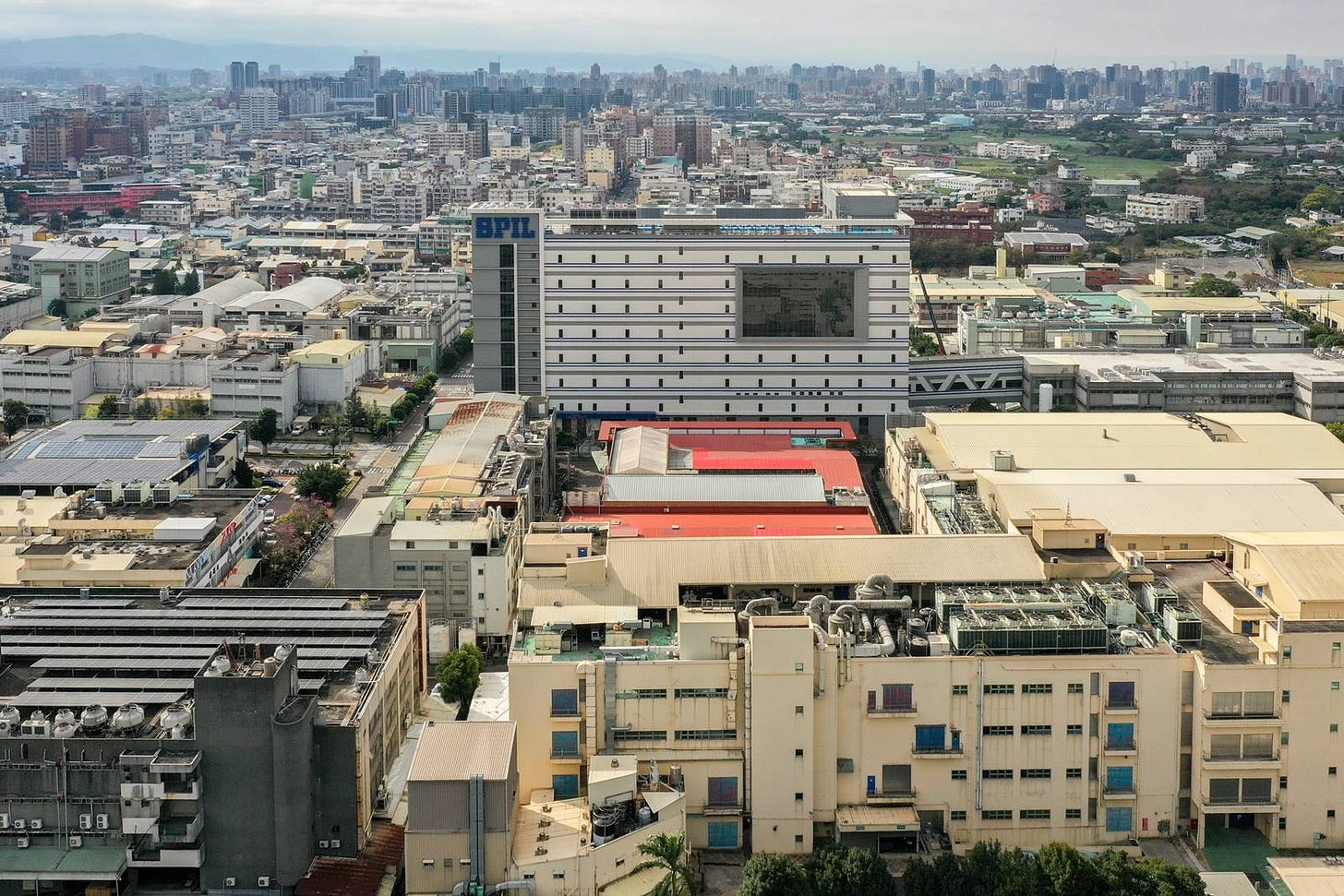
For Nvidia’s CoWoS orders, the easier “oS” segment (the final stage of the process) will be fully outsourced to SPIL.
According to industry sources, Jensen Huang hopes SPIL will invest NT$200 billion (US$6.4 billion) in new facilities to meet Nvidia’s future demand.
SPIL reported this request to its parent company, ASE Technology Holding Co. In response, ASE Chairman Jason Chang(張虔生) asked: Can they guarantee that, once the factory is built, demand will still be there?
In the end, SPIL only agreed to invest NT$100 billion (US$3.2 billion)—half of Nvidia’s request.
I wonder if this is Jason Chang’s realization after reading the second volume of Morris Chang’s autobiography.
In the book, Morris mentions that when Apple requested TSMC to expand capacity, he knew that customers often overestimate their demand, so he only agreed to provide half of the requested capacity.
In the end, it still turned out to be enough.
10-Second Recap:
A 60-year-old glass manufacturer, seemingly unrelated to high-tech, becomes a key supplier for Nvidia’s GB200.
The solution to the CoWoS bottleneck lies in Taiwan Glass’s Taoyuan plant.
How long will the AI boom last? Supply chain manufacturers remain cautious about expansion.
Read more here:




